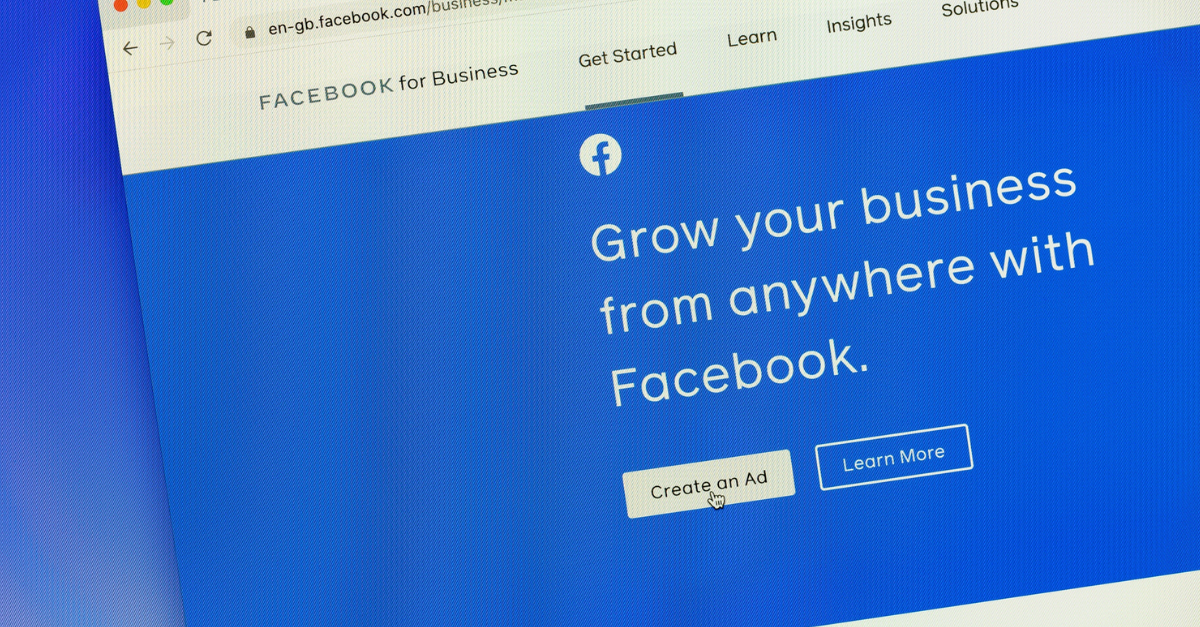Let’s face it, you will not be the only skeptic reading this post.
Knowing that when it comes to multi-touch B2B marketing efforts – where some industries are faced with months-long sales cycles – finding your spot in a social platform designed for consumers may seem like a waste of media spend dollars.
But like a true marketer, you will continue reading to find out that social media is no longer a B2C-only playground and that it’s time for these business-to-consumer marketers to step aside and share the wealth with you, the business-to-business marketer!
Although Facebook as always been a great tool for those business-to-consumer marketers, making it easy to offer discounts, promote sales, and retarget buyers, business-to-business (B2B) marketers have recently been investing more media dollars into Facebook than you might expect. According to a study by Statista, 89% of B2B businesses now use Facebook over LinkedIn (81%) for marketing.
Why invest those B2B marketing dollars in a platform traditionally built for consumers? Facebook has been consistently adding targeting features around professionals, careers, job interests, and intent, making it easier for B2B brands to market on Facebook.
So how do you make advertising on Facebook work for you, as a B2B marketer? Follow these easy steps in order to start advertising on Facebook:
Define your goals and what to measure
To help define your business goals for B2B Facebook ads, you should first consider which product or service makes the most sense for paid media. Do you want to offer a specific product or service? Do you have advisers you could feature? Do you know your customer journey—and where Facebook ads might support steps for your buyers along the way? What visuals or assets do you have available, and what would you like to create?
From there, you can start thinking about your goals – Do you want to increase reach with a branding campaign? Get more leads for the sales team? Generate more traffic to your company blog? The answers to those questions will help you decide which metrics to measure.
If looking for an increase in reach, consider tracking organic reach, paid reach, impressions, engagements and follower count.
If looking for leads, consider tracking clicks, new leads from social, and conversions—and don’t forget to track what happens to those leads once they land in your CRM system and marketing automation platform.
Find your target audience
For some B2B businesses, this might be a challenge, but customer personas are a good place to start. The good news is Facebook has many options for targeting professionals (and not just consumers). Let’s look at a few options that can help B2B marketers:
Job title targeting. Facebook has brought this feature back and added new options allowing you to target page admins, employers, job titles, education, and fields of study. Facebook will even make recommendations and show you audience sizes for the specific fields you’ve chosen from the 2.27 million active users of the platform.
Retargeted traffic. You can use Facebook to retarget people who have consumed your content before.
- You can retarget website visitors by including those who have been to a specific page on your website or engaged with your content – watched a video, downloaded a whitepaper or visited your blog.
- Retarget anyone who has liked your business Facebook page.
- Retarget a customer audience by uploading a customer list or your email newsletter list to Facebook, which can then target and try to match up customer details for people who have signed up.
Setting up the campaigns that promote the main objectives
Understanding which campaign types align with your business goals will help you build an effective foundation for B2B advertising on Facebook.
Facebook has four main objectives in which you need to focus if you want to successfully advertise your business’s products and services: brand awareness, traffic, lead generation and conversions. Let’s discuss each of them.
Brand Awareness
The sole goal of these campaigns is to get your prospects’ interest by casting a wide net in your search efforts. These campaigns guide prospects into the top of your marketing funnel.
The audiences you target within brand awareness campaigns should be broad. Brand awareness campaigns are also a great place to use lookalike audiences based on your past converters or from existing customers.
Traffic
Traffic campaigns allow you to drive traffic to the main source – your website! With traffic campaigns you can begin to arrange your products and services with specific demographic and industry profiles.
Lead generation
Lead generation ads are generally cost effective. They allow you to collect prospects’ information directly within Facebook, removing a potential point of friction.
Facebook ads allow you to collect valuable contact information from your prospects, which you can use to build email lists, add prospects to your email nurture programs, or even generate a solid prospect list for your sales team.
Conversion campaigns
Considered the campaigns that close deals, conversion campaigns are often the most expensive. For this reason, maximize the value of every click by sending traffic to targeted landing pages within your website.
Measuring Success with Facebook B2B Ads
So, you’ve determined your goals, have set up your determined objectives, and are ready to set up shop. Now what? Before applying the tips listed above, make sure you’ve done these three things first:
Set up a plan to measure success. Make sure you get a social media analytics platform to help you track it all.
Create a social media persona. Use a conversational tone, engage with other users instead of just broadcasting your message, and don’t be afraid to use a little humor. Use social media as a way to humanize your brand, which means you should have a defined “voice” of your brand on social media.
And install the Facebook pixel on your website. This pixel, which can be customized based on your campaign goals, allows you to optimize and track conversion types. Make sure this pixel is firing correctly before moving forward with the actual campaign.
Ready to get started? Let us know how you’re leveraging Facebook for B2B advertising in the comments below or reach out to us to start chatting about how we can get you started!



